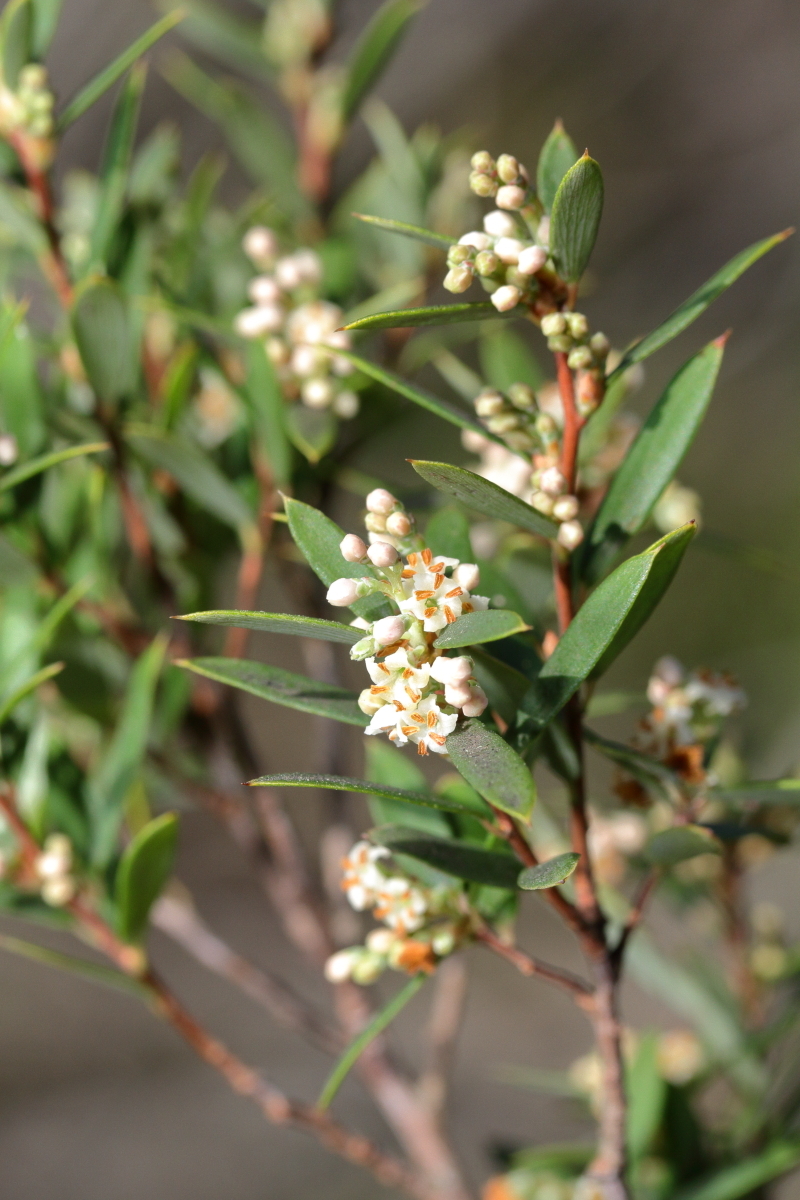Monotoca elliptica
(Sm.) R.Br. Tree Broom-heathDensely branched shrub or tree to 8 m high; branchlets puberulous. Leaves narrowly elliptic to oblanceolate, 9–23 mm long, 2.4–6 mm wide, mucronate, ± flat, glabrous, lower surface light green to whitish-grey; margins plane to slightly recurved, smooth; petiole 0.8–1.7 mm long, glabrous or puberulous abaxially when young. Flowers mostly in racemes, occasionally also solitary on new growth; bracts deeply concave and caducous or the distal sometimes persistent and leaf-like, longer bracts more than 1.3 mm; peduncles and pedicels 0.5–3 mm long; bracteoles 0.7–1.3 mm long; sepals 0.8–1.3 mm long; corolla whitish-cream, campanulate, 1.4–2.2 mm long in female flowers; 1.8–3.4 mm long in males; lobes glabrous or occasionally minutely papillose, slightly longer than tube; anthers 1.1–1.9 mm long, exserted or rarely half-exserted from corolla tube; ovary plus style 0.7–1.3 mm long. Fruit ovoid, 2.5–4 mm long, red-orange at maturity. Flowers Jun.–Sep.
GipP, OtP, CVU, EGL, EGU, WPro, HSF, HNF, OtR, Strz, VAlp. Also NSW, Tas. In Victoria restricted to eastern, near-coastal areas with a preference for sandy soils (such as tertiary dunes) and rock outcrops. Occurs primarily in coastal shrubland and lowland sclerophyll forest, often abundant in long-unburnt areas.
Albrecht, D.E. (1996). Epacridaceae. In: Walsh, N.G.; Entwisle, T.J., Flora of Victoria Vol. 3, Dicotyledons Winteraceae to Myrtaceae, pp. 464–509. Inkata Press, Melbourne.
 Spinning
Spinning
